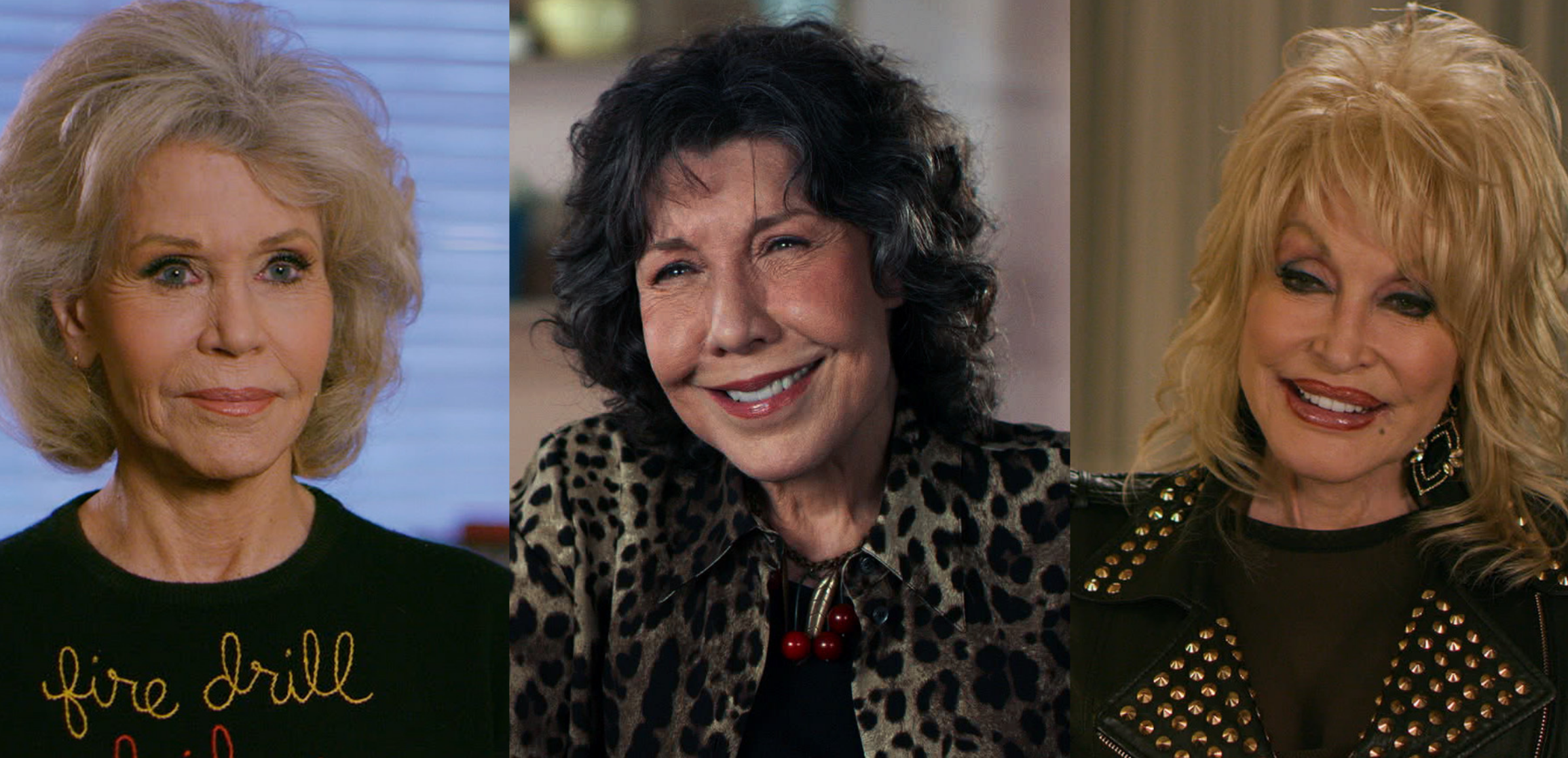Michael Ward on Saturday, October 15
★★★1/2
Entertaining and as straightforward as it is informational, Still Working 9 to 5 contextualizes the impact that the classic comedy, 9 to 5, has had since its original 1980 theatrical release. Commemorating more than 40 years since the film debuted, directors Camille Hardman and Gary Lane unpack how ahead of its time the film was, as well as how bold a film it was in mirroring back messages of existing inequality across the working landscape.
When released the week before Christmas in 1980, 9 to 5 was the second biggest film to open that weekend, behind Clint Eastwood’s Any Which Way You Can. However, word-of-mouth and returning audiences propelled it to become the second biggest film released in 1980 behind The Empire Strikes Back. Jane Fonda, Lily Tomlin, and Dolly Parton became a trio symbolizing female empowerment and strength. Parton’s theme song, sharing the same name as the movie, became a #1 hit on the Billboard Hot 100, won a Grammy, and earned an Academy Award nomination for Best Original Song.
Hardman and Lane spend a notable amount of time on the film’s commercial accomplishments, but dive deep into the behind-the-scenes machinations which brought the film to theaters. As it turns out, and not surprisingly, the road to the big screen was a difficult one.
Fonda and producing partner Bruce Gilbert were inspired to make a film spotlighting the struggles women had across the workforce. Making approximately half of male counterparts, women were employed in more than 20 million support, clerical, and office staff jobs in 1980. Protections against pay disparity, promotion opportunities, and sexual harassment and abuse were largely non-existent. Advocacy for women’s equality in the work place was drowned out, or flat out ignored. Fonda, to this day someone never afraid to take a controversial stand on a political issue she is passionate about, fought hard with Gilbert to get a script written and someone to greenlight a film that tells the stories of millions of women’s experiences each and every day.
Tomlin and Parton were Fonda’s choice, marking Parton’s first acting role and cashing in on Tomlin’s massive popularity as a stand-up comic, television star, and actress in her own right. (She would top the box office a few weeks later with The Incredible Shrinking Woman). However, when the film is branded “too dark, ” additional humor and over-the-top fantasy sequences are added in depicting the women torturing their misogynistic and abusive boss (played by Dabney Coleman). Unexpectedly, Tomlin departs the film, calling the changes “silly” and “unnecessary.” Eventually, she would return.
What one soon realizes is just how resistant nearly everyone in a position of power was in even making the film. Fonda, Tomlin, and Parton share their individual and collective experiences into the process. Coleman is here as well, talking about those additional scenes, defending them in flipping the world around on audiences and using satire to make its statement of workplace inequity and toxic masculinity.
As we walk through how the film was made, Still Working 9 to 5 is quite a lot of fun. Though admittedly I don’t hear a lot of people talk about the film these days, Hardman and Lane do try and make the case that this was a groundbreaking and bold film, far ahead of its time period.
As that may be indeed true, when the filmmakers bring in Rita Moreno, for example, to talk about the mid-1980s television spinoff that languished for two separate runs over five years, or Allison Janney to discuss the Broadway musical which opened and closed in five months in 2009, the film’s impact seems padded and slightly exaggerated. What does ring true is how 9 to 5 succeeded in making its case to audiences, though Hardman and Lane point out that so many of the themes and topics the film touches on remain pertinent to the world we live in presently.
A breeze to watch. the film’s use of movie clips and historical footage of the time period lends great perspective to the testimonials shared by all involved. Five years removed from the #MeToo movement, and a few examples we can point to where women have broken the proverbial glass ceiling, we still find ourselves in a world where women earn just 82 cents to every dollar a man makes, and women are still not placed prominently in positions of management and leadership in most industries and organizations.
Was such a serious topic undermined by the film becoming a slapstick comedy? Perhaps, but there are moments in Still Working 9 to 5 which make us want to believe this was significant of launching a movement, opening cultural conversations, and leaving a lasting impression. While I’m not sure the film has retained that lofty status, the documentary about the film is nonetheless a fun and fascinating endeavor.

